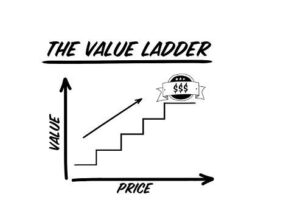Studies have shown that around 45% of all behaviour is habitual. Think about that for a moment. That means almost half of all the actions we perform are done without any conscious thought and are triggered by our environments or other stimuli.
If you observe your behaviour and that of other people, you’ll soon find that you typically make the same decisions often at the same time and place, without any conscious thought.
Think about your morning routine. What do you do every morning when you wake up? Chances are you follow the same habitual patterns of action – checking your phone, taking a shower, making a coffee etc.
Our brains are hardwired to make things easier for us, including our decision making and any actions we repeatedly perform. If we do something repeatedly the brain makes a habit out of it so that it can free-up our thinking power for more strenuous decisions or tasks that we haven’t performed before.
What does this mean to us as marketers?
As consumers, the way we shop and make buying decisions is also a habitual behaviour for most people.
For many people, this means shopping on auto-pilot: buying the same brands of food, shopping in the same stores and visiting the same websites online. This is especially true for routine purchases that we perform often such as grocery shopping.
We may buy a certain brand of bread to try it. If we like it, we may buy it again and it soon becomes our brand of choice. Over time this decision to buy this brand becomes less of a conscious choice and more of an unconscious habit. Unless something happens to disrupt that habit, we may end up buying that same brand of bread for the rest of our lives.
Once a brand has acquired a new customer, they work very hard to retain that customer. They may offer a discount on the next purchase or have a loyalty scheme where you can win rewards or points with every purchase. This is done to encourage you to become a repeat customer.
The more often you buy that brand the more likely it is you will become a habitual customer of that brand. Some customers will be loyal to a brand for life – and not always because that brand is the best in that category – but simply because the consumer has formed the habit of buying that brand!
Smart companies work hard to keep those customers and make them habitual customers. The perfect example of this is Apple. They have really redefined the meaning of “brand loyalty”.
Apple customers will typically start off using one product, such as the iPhone for example. Over time they get used to Apple operating systems and form the habit of using them. This leads them to adopt other products in the Apple ecosystem such as a MacBook or Apple Watch, iPad etc.
Apple products have been cleverly designed to work seamlessly with one another. Over time customers form the habit of using Apple products in all areas of their lives, from Macbooks to iPhones, to Apple Watches. Apple has managed to create an almost cult-like following among its customers, which continuously keeps them habitually coming back for more Apple products.
How do we as marketers interrupt those habitual buying patterns to get consumers to make conscious buying decisions and take the actions we want them to take, such as clicking on our ads or purchasing our products instead of the brands they habitually buy?
Below are some ways you can take advantage of the power of habits and use it to your benefit.
How to apply the power of habit to your marketing
Market to People Who Have Undergone Life Changes
As we’ve already mentioned, habits are context-specific, so to take advantage of this we should look for opportunities where prospects have undergone some sort of change to their environment or setting. These changes offer us an opportunity to create new habits in prospects and turn them into our long-term customers.
Perhaps they’ve moved to a new city, got a new job, recently got married or just had kids. These sorts of big changes are commonly known as Life Events. Life Events offer the perfect opportunity to be able to disrupt consumers routines and/or environment enough so that the old habits are weakened.
A recent study was able to demonstrate that people are more likely to switch brands when they have undergone a life event. These life changes were able to cause people to switch their brands of coffee, beer, mobile phone, and broadband provider to name a few. During or after a life event is the ideal time to target consumers with our ads and introduce them to our brands and products.
Facebook and other platforms allow us to specifically target our ads to people who have recently got married, had children, moved cities, changed jobs and more. The more specific and granular you can get with your targeting the better.
Use these opportunities to get your adverts and products in front of these prospects whilst the window of opportunity is open. If you are able to win over a customer at this critical stage or milestone in their lives, they may remain loyal customers for many more years to come.
Disrupt Habits At The Point Of Action
If we can grab our prospect’s attention just before or whilst they are engaged in habitual behaviour, we have a good opportunity to steer their behaviour in the direction we want.
This is easier said than done however and will require a considerable understanding of your prospect’s habitual patterns and behaviours. We’ve seen how Facebook ads have evolved now to look just like organic posts on someone’s timeline. YouTube has also started doing the same thing by placing static ads among other videos. These ads look exactly like a normal video thumbnail.
Make the headline or opening of your ad relevant and captivating enough to disrupt your prospect’s browsing habits and make them take action.
Video ads work extremely well for this particular tactic, as long as the first 5 seconds of the video are captivating and relevant enough to grab and hold their attention.
Target Consumers on Sites They Habitually Visit
If you know which type of sites your prospect is likely to habitually visit, target those sites with your ads. Perhaps they regularly visit a certain forum, or maybe they log onto Facebook at a certain time every day.
You can easily track consumer behaviours online now using a variety of tools and different software. Once you know what sites they’ve visited you can target your ads to show on those sites or similar sites.
Platforms like Google Ads and Facebook utilise machine learning and A.I to track the best times and devices to show the appropriate ads to your target audience.
Use these insights into their online habits to your advantage and get your marketing messages in front of them at the right time, where they’ll have the biggest impact.
Understanding the habits of your target market is the key to being able to influence and change their buying behaviour so that you can attract and retain more customers.




